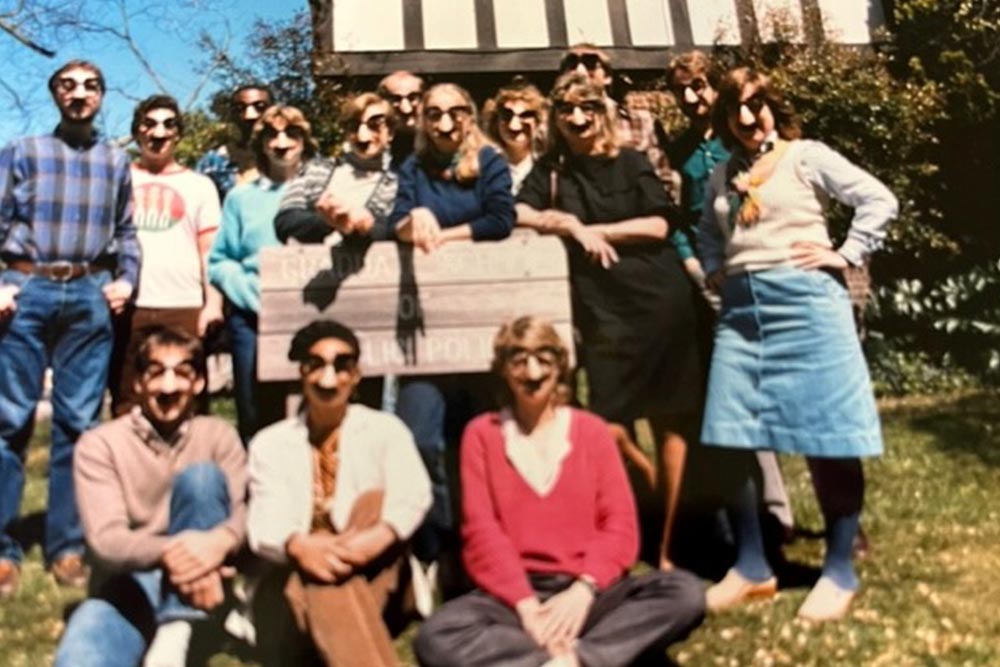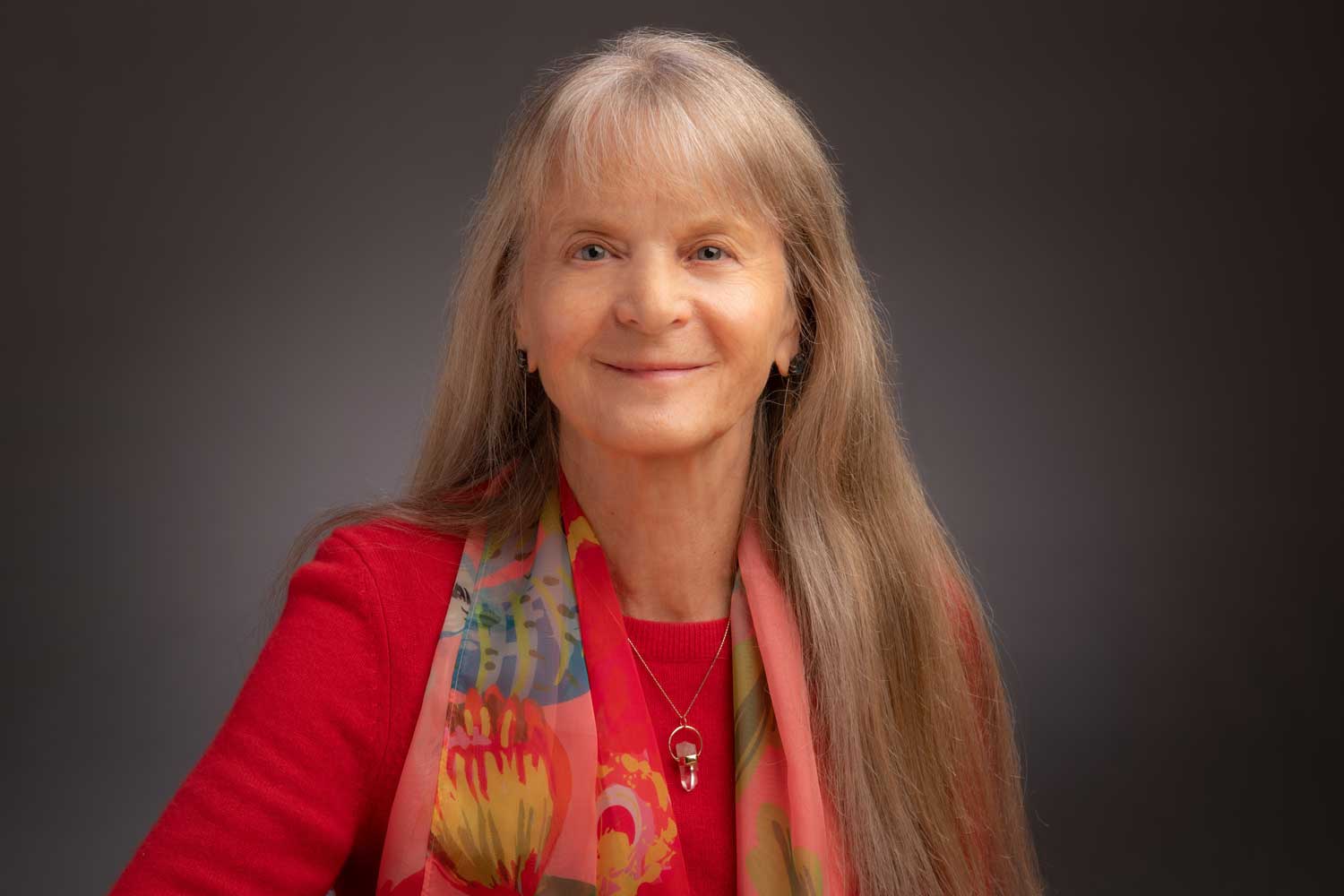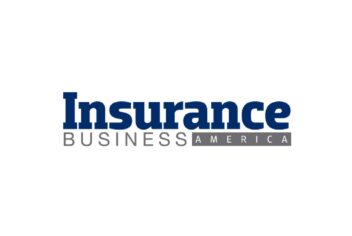Earlier this month, I was moderating a leadership meeting for the managers at Nonprofits Insurance Alliance. Since the topic of the meeting was about how to have difficult conversations with employees, I opted to start with an icebreaker: I had previously asked participants to take the Open-Source Psychometrics “Which Character” Personality Quiz online and reveal what popular character they best matched up with. The answers were varied, and included characters ranging from Geordi La Forge from “Star Trek” to Nala from “The Lion King,” and a few with Lester Freamon from “The Wire.”
My corresponding character? The Oracle from The Matrix. Now I don’t fancy myself to be any sort of oracle — far from it! But if I look for commonalities between The Oracle character and myself, I’d say that we both recognize that the kind of change that is sometimes needed for the betterment of society and the world at large is often controversial.
Thirty-five years ago, I wrote a thesis at UC Berkeley that would go on to change my life and help tens of thousands of nonprofits and the people they serve. In that thesis, entitled “Nonprofit Organizations and Liability Insurance: Problems, Options, and Prospects,” I suggested that poor choices made by commercial insurance carriers was the primary cause of the insurance crisis in the 1980s.
I then presented a series of specific solutions for nonprofits with regard to the insurance crisis, and these solutions effectively became my roadmap and business plan for what would eventually become Nonprofits Insurance Alliance.
As it turns out, that dusty old thesis has some implications for the current insurance crisis, as well.
Today, many of the same sloppy underwriting practices by commercial insurers have brought us to this present crisis.
Instead of doing the hard work of understanding that the motivating force for many of the huge insurance payouts related to sexual abuse is a crisis of cover-up by large institutions, many insurance companies have painted community-based nonprofits as the culprit.
This has the predictable result of drastically reducing the available insurance for nonprofits which, once again, has resulted in skyrocketing price increases. Thankfully, this time around NIA is here to help.
Those are some strong statements! But before we get to the present, I want to take you back to the beginning, and let you know how I came to them.
From Lexington to Northern California
In the 1970s, I was in my late 20s. I owned a natural foods restaurant and a natural foods store in Lexington, Ohio. It was actually really consistent with what I’m doing now: I was interested in helping people find a healthier way to live.
I felt there was a lot of misinformation out there around natural foods, and the reality was not as complex as it was made out to be: It wasn’t hard to eat in a manner that was better for people and the planet. I thought that, if I had a store or restaurant, I could demonstrate to everyone the benefits so they could experience them for themselves.
So, you might be wondering, how did I go from owning a health food store and restaurant to running a highly specialized insurance company for nonprofits on the other side of the country?
That transition came in the form of a road trip. I took a month off to help drive a friend across the country to California, and when I got to Santa Cruz, I fell in love with it. I sold both of my businesses back in Lexington, and I spent the next year trying to figure out what I was going to do next.
The answer to that was to finish my degree in Economics from UC Santa Cruz. I was already in my thirties and decided to fast-track my career by getting a master’s degree, so I enrolled at the UC Berkeley School of Public Policy.
I was grouped with other students to create a first-year thesis, and that group was paired with the California Senate Office of Research — who had asked us to look into what was happening with the insurance crisis, and determine what could be done about it.
The Thesis
In my second year at Berkeley, I had to write my own thesis. I was invited to write it specifically on how the insurance crisis that was impacting nonprofits. The California Community Foundation and the Conrad N. Hilton Foundation invited me to develop a study on the topic.

Pamela Davis’ class, in disguise, at the UC Berkeley School of Public Policy. Davis is in the middle behind the sign.
Even at this early stage, I had my detractors: My economics professor at the time told me that the ideas in this thesis wouldn’t work. His premise? I had misread the way that the insurance industry works.
My argument was that there can be pockets of the economy that are poorly understood by the insurance industry – even though it’s an information-driven industry.
I argued that when that misinformation happens, it can unduly restrict the market for otherwise good insurance risks. My professor really struggled, as an economist, to allow that sort of reasoning to persist in one of his approved theses.
(As a side note, when I saw him 10 years later, he admitted to me that I had been right all along!)
The California Community Foundation and the Conrad N. Hilton Foundation ended up liking my thesis so much, they published 5,000 copies of it, which gave me some (probably underserved) credibility at the time.
Again, I argued in the thesis that the primary cause of the insurance crisis was irresponsible underwriting, rating, and investing by commercials carriers as well as a bit of a knee-jerk reaction to a high-profile sexual abuse allegations at a daycare described below.
At the time, there was a big drop in the stock market, and these companies were really strained for capital. This insurance crisis was in large part due to poor investments and poor underwriting by commercial insurance companies, but that didn’t stop them from blaming it on anything other than their own behavior.
Herd Mentality in the Insurance Industry
In the 1980s there was also something of a herd mentality happening in the insurance industry. The McMartin preschool case, where there was alleged to be a lot of abuse happening at a daycare facility, had garnered a lot of attention in the press. It was part of a larger sociological hysteria that was sweeping the country at the time.
Commercial insurers’ response to all that was nothing short of a stampede — they couldn’t get away fast enough from any sort of insurance that had to do with sexual abuse exposure.
The social inflation theory found some footing with this case and the era and interestingly it has reared its head again in the insurance crisis we have been experiencing recently.
Both then and now, there were some very high-profile lawsuits that produced some very high and unexpected payouts.
Real money was paid out in these claims, and I don’t want to minimize that, but what has mostly gone unsaid is that sometimes, insurance companies just don’t do a good job at handling these claims. Sometimes, they decline claims that should be covered or fail to recognize a serious claim early enough in the process. Some attorneys have developed cottage industries suing on sexual abuse claims and taking advantage of community outrage to exaggerate cases when little information is available. Sometimes insurance companies misinterpret the strengths of their defenses. In an attempt to avoid paying settlements, they can roll the dice with juries — even when the facts of the case are egregious — and end up having to pay very large settlements. The litigation environment that prompted my thesis in the ‘80s had similar circumstances.
I don’t place all the blame on commercial insurers, but there is no denying that they bear part of the reason for this crisis. They can blame it all on something else, but that doesn’t make it so.
Sometimes the modern insurance industry makes decisions based on headlines and prevailing community angst. I remember one specific case where a headline-making nonprofit was trying to get insurance.
The broker had spent the better part of a year looking for insurance for the nonprofit and, in that process, approached 90 different insurance companies. One company finally made an offer: A $500,000 premium for a $1 million policy. An acquaintance of mine had heard of the difficulties the nonprofit was having and reached out to me directly. NIA insured the nonprofit not long after that.
The point of the story is that although the organization had very little risk, the insurance industry treated this nonprofit like they were going to go out and riot. It was ridiculous. They believed the hype in the press. Some may try to blame it on social inflation, but we also know that the herd mentality played a part while showing the ugliest side of institutional racism. After many years, we proudly continue to insure the nonprofit.
Next time you hear that “social inflation” is to blame, think of that experience.
Today’s Crisis? A Crisis in Cover-up
We now have the data from more than 30 years of insuring nonprofits and know that there has been no spike in sexual abuse claims against community-based nonprofits. Yes, some of these claims are now more difficult to settle for reasonable amounts, but the real issue is that juries are inflamed by the crisis in coverage up we have seen at some of the churches and universities.
Juries don’t distinguish between the systemic cover up engaged in by the Catholic Church and a small nonprofit that had good practices in place but had one employee take advantage of their position of authority and engage in a criminal act. They just think: It’s really bad, and you’ve allowed this to happen, or you’ve caused this to happen.
It is unfair, however, to paint small nonprofits with the same brush as these larger institutions.
Today, the insurance industry doesn’t want to provide sexual abuse coverage in general because of the high-profile nature of these claims caused by these cover-ups.
Insurance companies have either left this market or imposed draconian premium and deductible increases, very similar to the difficult insurance market for nonprofits that prompted me to write my thesis in the first place.
The Impact of NIA
If you’re thinking that nothing has changed in these 35 years, that’s not the case.
During hard times, nonprofits in California have experienced a much less volatile period than nonprofits in many other states — with the exception of those that had property in wildfire areas. That was an area where we were not able to moderate the market, because some properties may not be uninsurable because of the changing climate.

The Nonprofits Insurance Alliance net-zero building in Santa Cruz, California.
But for liability and property not located in wildfire-prone areas, because we are such a large part of the market, we actually have a fairly significant moderating impact on the commercial market in California. Part of that is because commercial insurers know if they attempt that type of unreasonable conduct in California, we stand ready to take that business off their hands.
Outside of California, we’re not large enough yet to moderate that behavior. But we’re growing fast. A few days ago, NIA welcomed our 26,000th insured member.
Looking Back on the Thesis and What I Didn’t Know Then
When I was writing my thesis, I did not anticipate how hard it would be to make a nonprofit insurer of nonprofits happen. It was easy for me to explain it on paper, but doing it? That was a whole other thing!
I also didn’t anticipate how much a little, nonprofit-governed insurer like NIA would threaten those humongous commercial insurance companies. During the early years, even though they didn’t want to write this nonprofit business, they also didn’t want us to succeed. Some of them went to great lengths to snuff us out, but we survived and thrived!
I also underestimated how much nonprofits would appreciate having a company that cares about them. Both brokers and nonprofits quickly recognized how different NIA was, and how quickly loyalty would build up once they recognized that we were just a different beast.
Today, 95% of nonprofits who join us renew with us. And most of those we lose are small nonprofits that go out of business. Interacting with nonprofits and their brokers — and hearing them sigh with relief when see they have found an insurer who is consistent and stable and won’t drop them when they have a claim — is very rewarding.
I close with the last paragraph of the forward to my thesis written 35 years ago this year.
“With greater awareness of the nature of the present dilemma and, most importantly, with the increased options to improve what the nonprofit community can to do help itself, perhaps the day will come when what is now seen as a crisis will be referred to as an opportunity realized.”
There would be no better outcome for me than for NIA to be seen as that “opportunity realized.”





